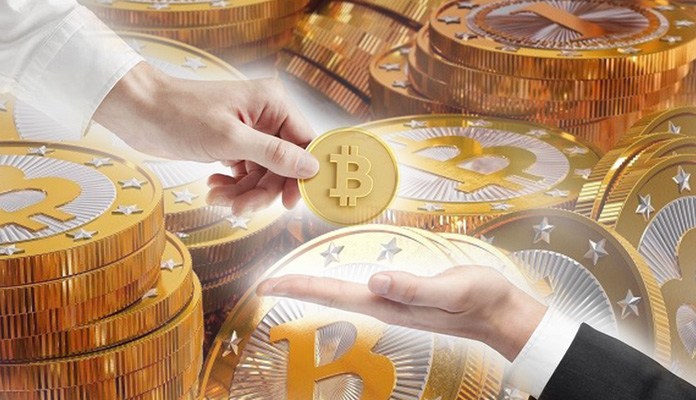Bitcoin is the New Gold —
– and Why Everyone Wants a Piece of It
BY JOSIAH HERNANDEZ
In the same way gold gained universal value by being rare, interchangeable, and divisible, bitcoin is gaining universal value by being the most secure rare, interchangeable, and divisible digital asset. It is available to buy and sell with over 50 traditional currencies and in hundreds of major metropolitan markets across the world.
However, transcending the historical appeal of gold, bitcoin can be transferred instantly across the globe at the press of a button, from the comfort of your home or office.
Bitcoin’s scarcity is irrefutable: The total amount of available bitcoin is capped at 21 million. Today, 16.7 million exist. This limit is built into the code underlying the digital asset, along with a clearly defined schedule (or mining rate).
It is expected that the last bitcoin will be mined in the year 2140. Mining is the term given to the production of bitcoin, where computers solve complex mathematical problems to keep the network secure and are then rewarded in the digital asset for their work.
Similar to how gold is mined using heavy machinery, and how mining faces increasing difficulty as the world’s undiscovered gold supply decreases, bitcoin is mined using specialized computers with even more specialized chips, that use a ton of processing power and electricity to solve the increasingly difficult mathematical equations.
As the world’s bitcoin supply decreases, the miners’ computers and chips must be constantly upgraded to not only solve these equations and earn the reward, but to do it first; faster than any of their competitors.
The current mining reward for solving a problem is 12.5 bitcoin, or around $250,000, at a price of $20,000 USD. On average, collective miners around the world, solve a bitcoin equation (or produce a “block”) every 10 minutes. In this manner, bitcoin holds yet another advantage over gold: It is both transparent and predictable in its supply schedule.
The computers mining for bitcoin are simultaneously processing transactions of the asset as it is transferred across the network. This means miners are also receiving all transaction fees from processed transactions on top of the actual mining reward.
Over time, the benefit to miners in transaction fees will become larger than the block rewards in a process that has already started to occur. Fees, however, don’t change based on location or distance to and from someone’s possession. While the cost to transfer gold grows with the distance needed for its export, bitcoin transfer costs are limited to transaction fees.
In terms of its interchangeability, bitcoin is referred to as fungible. This means one bitcoin in someone’s possession (digital wallet) holds the exact same value as one bitcoin in everyone else’s digital wallet. Unlike how gold can be effectively counterfeited with fool’s gold and debasement, bitcoins remain unfailingly authentic due to mathematical checks built into all bitcoin wallets. In the gold industry, trust must be placed in the issuer or the source of the yellow metal, both of which can produce counterfeits and in turn scalp the user.
Levels of security also vary with a users choice of wallet, with offline wallets acting as a high-level security solution, known as cold storage, and mobile app wallets acting as a low-level security solution, known as a hot wallet. Wallets are also used at bitcoin ATMs, machines with special software that can easily exchange the digital asset for cash. Such a quick, convenient extraction is an impossible feat with gold.
One of bitcoin’s unique features, a further improvement on its golden older brother, is its ability to be transferred in and divided into units as small as 0.00000001 — that’s eight decimal places.
These units are called Satoshis, in honor of the unknown but pseudonymous bitcoin creator Satoshi Nakamoto, and are the base units as well as smallest measurable units of bitcoin. One Satoshi equals $0.00020, or two-hundredths of a penny, at a bitcoin price of $20,000 USD. Shaving off a piece of gold for use in any sort of good or service is much more challenging than simply sending a fraction of a bitcoin, particularly in regards to e-commerce transactions.
Gold has always been referred to as a safe haven asset, and a store of value, and it is — but bitcoin is as well. The only difference is, the appreciation in value between the two assets are vastly different. Gold typically gains 4 percent in value per year, while bitcoin has averaged an increase of 1,430 percent since its inception in 2009, year over year. This is why we are seeing a fundamental shift from just individual and retail investors buying bitcoin, to now big money institutions, family offices and wealth managers wanting a piece.
As millennials and Generation Z come online and solidify their financial and banking habits, bitcoin stands to gain its first generations of native users. With a market cap of almost $290 billion, all mined bitcoin in the world is now worth over 4 percent of the $7 trillion value of all mined gold in the world.
As bitcoin proves its staying power, it continues to rapidly grow, taking advantage of the internet in ways gold simply cannot. It is possible to see a future where a significant amount of gold’s value is transferred into bitcoin —that is, into gold 2.0.

